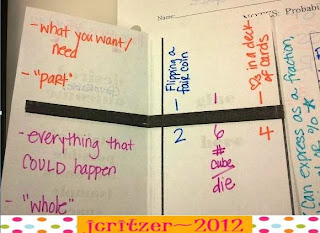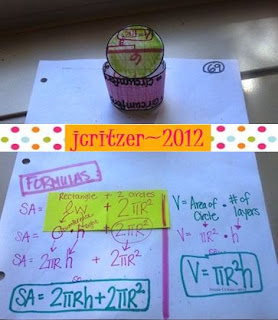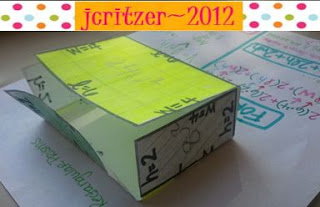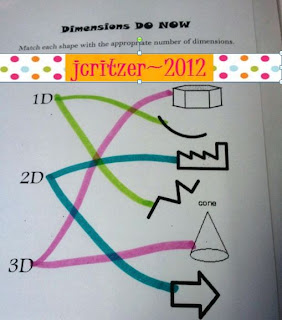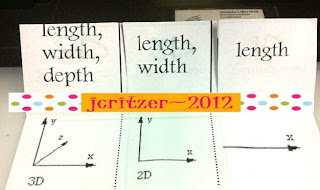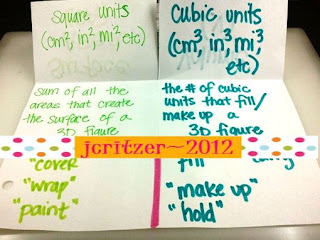I can't even begin to describe the work we put our brains through last week when we approached 'mean as a balance point' vs 'mean as fair share.' Luckily, my kids are amazing and we challenged ourselves and ultimately came out on top, if I must say so myself.
Although most of my kiddos remembered median, mode, and range, I wanted to make sure they had notes in case they forget. Also, it was important to me to make sure that they had notes comparing and contrasting mean as described above--as a balance point and as fair share.
I thought a semi-cootie catcher would do the trick with a little extra love on the 'mean' flap. :-)
I was very mindful in how each word was written except for 'mean', which I knew would need two separate images for balance point and fair share, so I left the outside word 'normal-looking.' You can see a green line (barely) under the word 'mode.' The kids picked up on the idea that the mode is the response or data point that occurs the most often, sort of the way the word 'mode' appears here, as if it were on a line plot (come on, work with me here!). Range has the arrows to demonstrate that it shows how spread out a data set is. The picture didn't copy all that well for median, but I watermarked a median in the middle of two neighborhood streets and spread the word 'median' out (in the middle of the word, of course) to make that reference.
You can (kind of) see from the picture above that the mean flap has a flap within the flap. Here is what is going on there...
Here, I was trying to show mean as a balance point within the phrase with the use of a balance scale. Notice it is balanced :-)
And the other side to this flap within a flap...
Here I was trying to show that with mean as fair share, you are finding the average by divvying up the data points into even groups, hence, the 4 squares with one letter per box.
When you open the flap within a flap all the way open, this is what we created...
We based our outside flaps on the steps we completed throughout the week as we found mean as a balance point and mean as fair share and we used the example in the middle to show how mean as a balance point can be used to find an estimate when the data cannot be 'perfectly balanced' and then you can find mean as fair share to determine a more specific mean.
For consistency, on the inside flaps of mode, median, and range, we used the same data.
I knew this foldable was going to be pretty cumbersome with all of the gluing and the mind-boggling revisiting of mean as a balance point vs mean as fair share, so I kept the kids writing to a limit in the general descriptions for mean, median, mode, and range. We just did a little underlining and highlighting.












